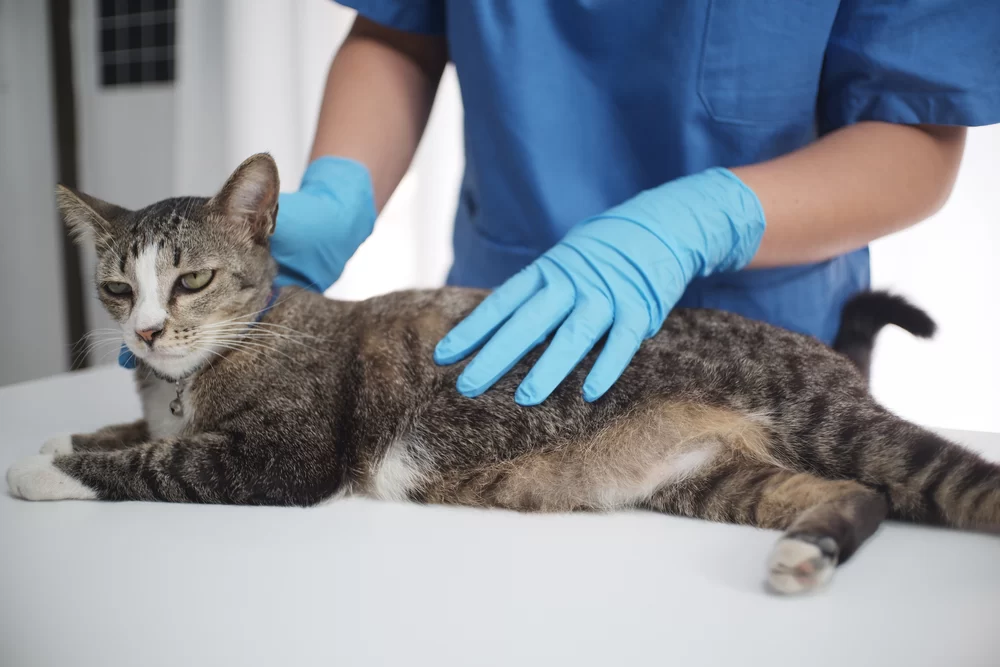- 1. Understanding Urinary Tract Issues in Cats
- 2. Common Symptoms of Urinary Tract Issues in Cats
- 3. Treatment Options for Urinary Tract Problems
- 4. Preventing Urinary Tract Issues in Cats
- 5. Real-Life Stories: How Cat Owners Managed Urinary Tract Issues
1. Understanding Urinary Tract Issues in Cats
Urinary tract issues in cats are common but often overlooked by pet owners until they become serious. The urinary tract includes the kidneys, bladder, ureters, and urethra, and any part of this system can become affected by infections, blockages, or inflammation. Feline urinary tract issues can be painful and stressful for both the cat and the owner, so understanding the potential causes and symptoms is crucial for managing the condition.
Urinary tract problems in cats can range from minor infections to more serious conditions like urinary tract obstructions, which can be life-threatening if not treated promptly. In many cases, these issues are caused by bacterial infections, urinary stones, or even stress-related factors. Addressing the underlying cause of urinary tract issues is key to helping your cat recover and live a healthy life.
2. Common Symptoms of Urinary Tract Issues in Cats
Recognizing the symptoms of urinary tract problems in cats is the first step in providing proper care. While the symptoms can vary depending on the severity and cause of the issue, some common signs include:
- Frequent Urination: Cats with urinary tract problems may try to urinate more often, but may only produce small amounts of urine each time.
- Straining to Urinate: Cats may exhibit signs of discomfort or strain when attempting to urinate. This can indicate a blockage or infection.
- Blood in Urine: If you notice blood in your cat’s urine, this could be a sign of infection, bladder stones, or other serious urinary tract conditions.
- Increased Vocalization: Cats may vocalize more often due to pain or discomfort when urinating.
- Urine Accidents Outside the Litter Box: Cats with urinary tract issues may have accidents outside the litter box, often due to the urgency or discomfort they feel when trying to urinate.
If your cat is displaying any of these symptoms, it's important to schedule a veterinary appointment immediately to determine the cause and start treatment.
3. Treatment Options for Urinary Tract Problems
Treatment for urinary tract issues in cats will depend on the underlying cause, but there are several common approaches to managing these problems. The treatment options include:
- Antibiotics: For urinary tract infections caused by bacteria, your vet will likely prescribe antibiotics to eliminate the infection.
- Dietary Changes: In cases of urinary stones or crystals, your veterinarian may recommend a special diet formulated to dissolve stones and prevent further formation.
- Fluid Therapy: If your cat is dehydrated or suffering from a blockage, intravenous or subcutaneous fluid therapy may be necessary to flush out toxins and help restore normal function.
- Medication for Pain: Pain relief is crucial for cats with urinary tract issues. Your veterinarian may prescribe pain management medication to help alleviate discomfort while your cat recovers.
- Surgical Intervention: In severe cases, such as urinary blockages or large bladder stones, surgery may be required to remove the obstruction or stones.
It's essential to follow your vet’s instructions closely, as improper treatment or failure to complete a prescribed treatment course can lead to recurring or worsening issues.
4. Preventing Urinary Tract Issues in Cats
Prevention is always the best option when it comes to urinary tract health. There are several steps you can take to reduce the risk of urinary tract issues in your cat:
- Ensure Adequate Hydration: Cats are often not good at drinking water, which can lead to urinary problems. Make sure your cat has access to fresh water at all times, and consider wet cat food to help increase their water intake.
- Maintain a Healthy Diet: Feeding your cat a balanced, high-quality diet is important for preventing urinary tract problems. Avoid overfeeding and ensure your cat’s diet supports urinary health.
- Reduce Stress: Stress can contribute to urinary tract issues, particularly in cats that are prone to cystitis (inflammation of the bladder). Keeping your cat’s environment calm and providing a consistent routine can help reduce stress-related urinary problems.
- Regular Veterinary Check-Ups: Regular vet visits can help catch early signs of urinary tract problems before they become more severe. Your vet can monitor your cat’s urinary health and offer guidance on preventive care.
Taking these preventative measures can help ensure that your cat’s urinary tract remains healthy and functioning properly.
5. Real-Life Stories: How Cat Owners Managed Urinary Tract Issues
Real-life stories of pet owners who have managed their cats’ urinary tract issues can provide useful insights and encouragement for those facing similar challenges:
Case 1: Mia, a cat owner, noticed that her cat, Tigger, was urinating outside the litter box. After a visit to the vet, Tigger was diagnosed with a urinary tract infection (UTI). Mia followed the prescribed course of antibiotics and made sure Tigger drank more water by adding wet food to his diet. After a few weeks, Tigger was back to his old self, and Mia continues to monitor his urinary health with regular vet check-ups.
Case 2: Mark’s cat, Bella, developed bladder stones and was straining to urinate. After surgery to remove the stones and a special prescription diet, Bella recovered fully. Mark made dietary changes and provided Bella with plenty of fresh water to prevent future stones, and he now regularly consults with his vet to keep Bella’s urinary health in check.
These stories show that with the right treatment, proper care, and prevention strategies, most cats can recover from urinary tract issues and lead happy, healthy lives.












